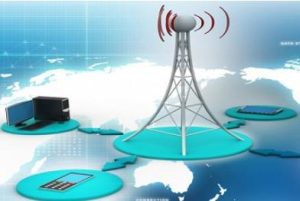What Is RF Networking?
Defining RF Networking
RF networking refers to the use of radio frequency (RF) signals to establish and maintain communication networks. This technology enables the wireless transmission of data across multiple devices without the need for physical connections. RF networks are foundational to many modern technologies, including mobile telecommunications, Wi-Fi, and satellite communications, facilitating a wide range of applications from simple household device connections to complex industrial systems.

Components of RF Networking
An RF network typically consists of RF transmitters, receivers, and antennas that operate across various frequency bands, depending on the application. These components work together to send and receive data packets through electromagnetic waves. The frequency bands can range from 3 kHz to 300 GHz, with specific ranges allocated for different types of services, such as cellular networks, GPS, and emergency services.
Advantages of RF Networking
One of the primary advantages of RF networking is its ability to cover large distances, making it ideal for mobile communication and services in remote areas. High-frequency networks, for example, can transmit signals over several kilometers without the need for physical cables. Additionally, RF networking supports high data rates, with modern systems capable of handling gigabits of data per second, catering to the growing demand for fast and reliable internet access.
Enhancing Connectivity and Mobility
RF networking greatly enhances connectivity and mobility. Its wireless nature allows users to stay connected over mobile devices without being tethered to a specific location. This mobility is crucial for the proliferation of Internet of Things (IoT) devices, which rely on RF signals to communicate and operate seamlessly across various environments.
Security Challenges and Solutions
While RF networking provides significant convenience and flexibility, it also poses security challenges due to the open nature of wireless communications. To mitigate these risks, advanced encryption protocols and secure access methodologies are implemented to protect data integrity and privacy. Techniques like WPA3 for Wi-Fi and enhanced encryption standards for cellular communications are continually being developed to fortify security in RF networks.
Future Trends in RF Networking
The future of RF networking looks toward even greater integration of wireless technologies into daily life and industrial applications. Developments in 5G technology and beyond are expected to revolutionize RF networking by providing ultra-high-speed connections and significantly reduced latency. These advancements will further enable technologies such as autonomous vehicles, advanced remote healthcare, and massively connected smart cities.
Conclusion
RF networking is a dynamic and essential aspect of modern telecommunications, providing the backbone for wireless connectivity across the globe. Its ability to transmit data over long distances, support for high data rates, and the mobility it offers to users are pivotal for both current technological applications and future innovations. As the demand for wireless connectivity continues to grow, so too will the technologies that support RF networking, shaping the way we interact with the world around us.